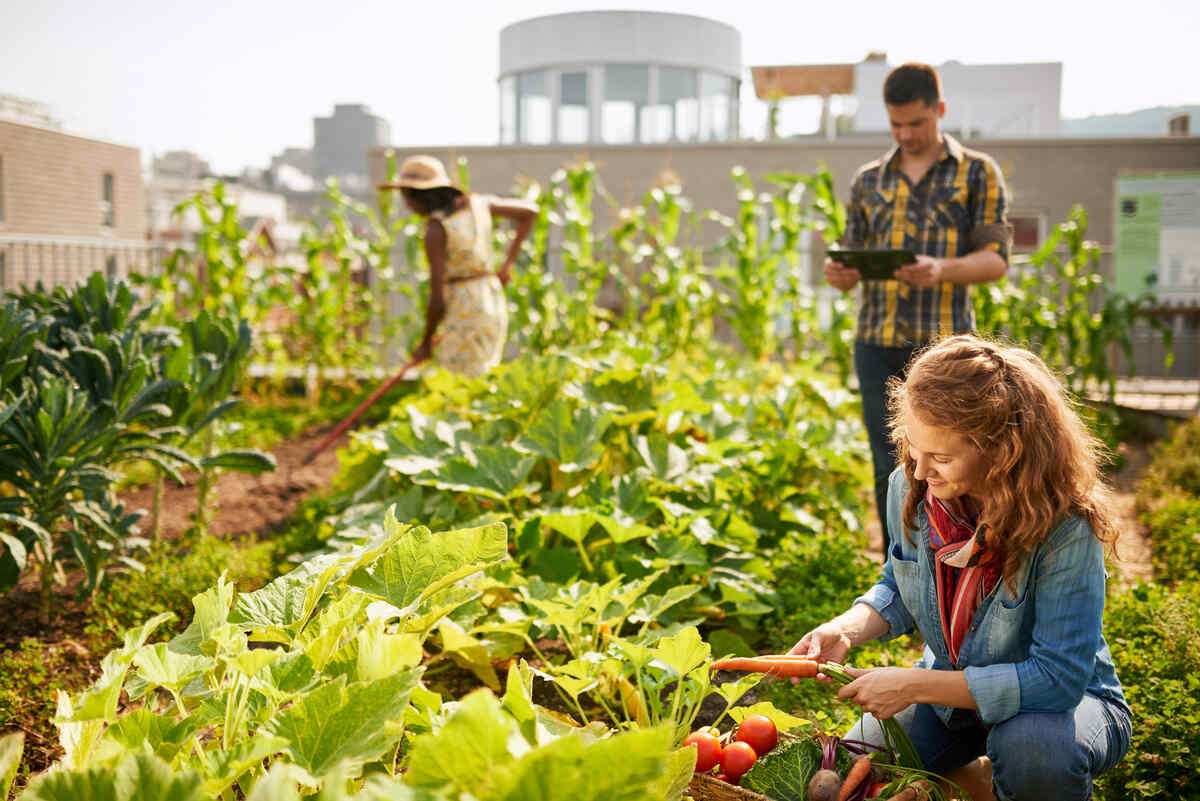City Blooming Fundamentals Explained
City Blooming Fundamentals Explained
Blog Article
City Blooming for Dummies
Table of ContentsCity Blooming for BeginnersCity Blooming for DummiesThe Single Strategy To Use For City BloomingThe smart Trick of City Blooming That Nobody is Talking AboutOur City Blooming PDFs
Interested in expanding food for sale in the City of Chicago? Below is a list of often asked questions pertaining to the guidelines and laws that cultivators should take into consideration when intending a city farming project.
The zoning amendment does not change any kind of other codes dealing with composting, structure authorizations, purchasing or renting City owned residential property, business licenses or environmental contamination. There are existing codes that manage these issues and they continue to be completely effect and might apply to your project. Neighborhood gardens are typically had or managed by public entities, public organizations or community-based companies and kept by volunteers.
Urban farms expand food that is meant to be offered, either on a not-for-profit or for-profit basis. Due to their industrial purpose, city ranches call for a service license.
The Only Guide for City Blooming
The quantity of garden compost product can not surpass 25 cubic yards at any kind of given time according to the standards in 7-28-715 of the City's Municipal Code. Since the soil at a lot of new garden websites needs amending, garden compost, dirt, wood chips, or various other materials can be gotten to create or improve the growing room.

If a building authorization is called for then the hoophouse will be considered an accessory structure. You can discover even more regarding the structure license requirements by getting in touch with the Department of Buildings. The 25,000-square-foot size limit is intended to stop a solitary area garden from controling an offered block or interfering with the block's existing property or commercial character.
The restriction does not apply to yards found in Public Open Area (POS) areas. Can there be even more than one community garden that is 25,000 square feet on a solitary block? Yes. The size limitation uses to private yards, not to individual blocks. No. Fence is not required, nevertheless, gardens that have huge vehicle parking areas might be needed to install secure fencing or various other landscaping features.
All about City Blooming
B1 & B2 areas call for that all industrial usage activities be performed indoors. R areas limit commercial task. The laws reflect the purpose and intent of the Zoning Code. Is fence needed for urban ranches? Yes. Fences may be required, along with landscape design and screening, for specific auto parking locations and outside work or storage space locations depending upon place and the certain activity happening.
Urban ranches call for building authorizations and zoning approvals prior to construction (garden care). Various other kinds of city testimonial might be called for depending on details frameworks, tasks, dimension, landscape design, licensing, public health and stormwater monitoring concerns.
The Department of Organization Affairs and Customer Defense can assist identify the specific kind of organization permit that's required. Off street car park is needed for the majority of industrial jobs in Chicago. The needed number of car parking spaces is based on the number of workers functioning on website and not the square footage of the expanding space.
City Blooming Fundamentals Explained

Yes. A metropolitan ranch can offer compost product generated on site, nevertheless, the procedure should abide by the laws in 7-28-715 of the Chicago Municipal Code. Yes. Aquaponic systems are permitted indoors on city ranches in many zoning areas. A zoning evaluation and building license is needed in order to set up structures or systems and a company permit is needed as explained above.
As much as 5 hives or swarms of honey bees might be maintained as an accessory usage. Beekeepers should register with the Illinois Department of Agriculture. For more details about the recommended zoning change you may speak to the Division of Real Estate and Economic Advancement, Bureau of Preparation and Zoning at 312.744.8563.
Farming in cities and urban locations A metropolitan ranch in Chicago. Urban agriculture describes numerous methods of growing. https://www.openstreetmap.org/user/cityblooming, processing, and distributing food in urban areas. The term also relates to the area activities of animal husbandry, tank farming, beekeeping, and gardening in a city context. Urban farming is identified from peri-urban agriculture, which happens in backwoods at the edge of suburban areas.
Some Known Facts About City Blooming.
, that seek to form social networks established on a common principles of nature and neighborhood holism. These networks can create by method of formal institutional assistance, coming to be integrated into regional town why not look here preparation as a "shift community" movement for lasting urban development.
The much more direct accessibility to fresh veggie, fruit, and meat products that may be understood with metropolitan farming can enhance food protection and food security while decreasing food miles, leading to lower greenhouse gas emissions, thus adding to climate change reduction. Several of the first evidence of city agriculture originates from Mesopotamia.
Report this page